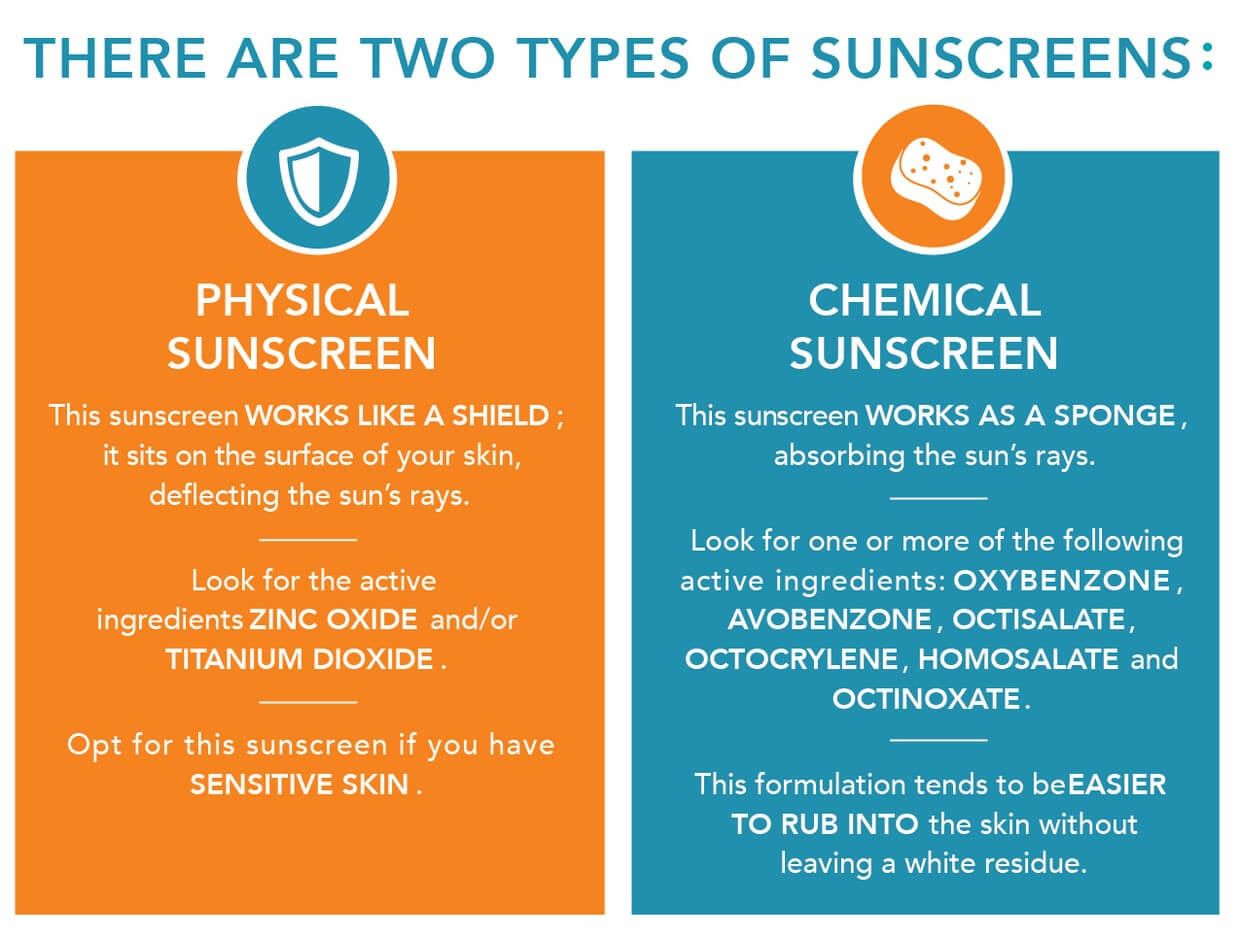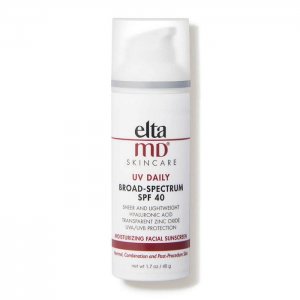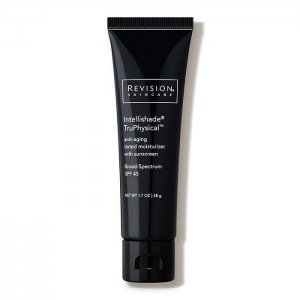You know the old adage, “April showers bring May flowers?” Well, those flowers need another ingredient to grow – sunlight. Rain or shine, it’s important to apply sunscreen to protect your skin from the damage of the sun’s UVA and UVB rays. Even if you don’t see the damage in the short term with sunburns or tanning, the long-term effects of sun exposure, including advanced signs of aging, dark spots, and even skin cancer, are cumulative and potentially dangerous. Before you go out to enjoy the warm weather this spring and summer (or any weather year-round), you need to protect your skin from the sun’s harmful rays. According to dermatologists, no matter what the weather is like, all exposed skin needs to be protected with sunscreen. Before applying sunscreen, make sure you’ve chosen the right option for your skin, between physical or chemical sunscreen. In this blog, we explore physical versus chemical sunscreen to help you determine which is right for you.
What is Physical Sunblock?
Physical sunblock, also called physical sunscreen, is a sun protection product that creates a barrier between the skin and the sun’s ultraviolet (UV) rays. Sunblock is made using zinc oxide or titanium dioxide. These are the only two active ingredients approved by the U.S. Food and Drug Administration (FDA) to protect against sun damage.
What is Chemical Sunscreen?
Chemical sunscreens are the more common option. Rather than blocking out the sun’s UVA and UVB rays, the ingredients in chemical sunscreens absorb the sun’s rays. The ingredients in chemical sunscreen include: oxybenzone, avobenzone, octisalate, octocrylene, homosalate, or octinoxate. The FDA considers these chemical sunscreen ingredients as being typically effective but possibly needing additional research to ensure safety prior to approval. The FDA asks for additional research into products regularly, but this doesn’t mean the products are unsafe. If they were known to be unsafe, the FDA would remove them from sale. Chemical sunscreen is safe for most people unless otherwise indicated.
Shop sunscreens on DermSkincare.com »
What’s the Difference Between Physical Sunblock & Chemical Sunscreen?

Which One Should I Use?
Chemical sunscreen absorbs more easily, but for those with sensitive skin and those who are worried about possible ill effects of chemical exposure, a physical sunblock may be a better option. Consider the following pros and cons of chemical sunscreen and physical sunblock to determine which is the best option for you.
Chemical Sunscreen Pros:
- Absorbs quickly and easily
- Great for daily wear
- Can be worn with other skincare products
- Lightweight for wear with cosmetics
Chemical Sunscreen Cons:
- Can be irritating for sensitive skin
- Expectant and nursing mothers, infants, and toddlers should not use chemical sunscreens
- May not be right for people with oily or acne-prone skin
- Can irritate the eyes
- Need to wait 15 to 20 minutes after application before sun exposure
- May cause redness for rosacea sufferers
Physical Sunblock Pros:
- Broad-spectrum, protecting from both UVA and UVB rays
- Protects skin immediately following application
- Not as irritating for sensitive skin
- Less likely to increase redness in rosacea sufferers
- Less likely to clog pores for those with acne-prone skin
- Safe for anyone, even expectant and nursing mothers, infants, and toddlers
Physical Sunblock Cons:
- More likely to rub off or be removed by water or sweat
- Needs to be reapplied more often
- Need to apply a thick coat of sunblock to be effective
- Can leave skin looking chalky
- May cause cosmetics to look flaky or clumpy
What Else Should I Look for in a Sunscreen?

EltaMD UV Daily Broad-Spectrum SPF 40
Choosing between sunscreen and sunblock is only one factor to consider. You should also be using a UVA and UVB broad-spectrum sun care product. All sun protection factors should be (SPF) of 30 or higher. The best sunblock or sunscreen application type is the one you will comfortably apply every day. So, find a product that works for you and use it regularly.
Shop sunscreens on DermSkincare.com »
How Should I Apply My Sunscreen?
To prevent sun damage, sunblock or sunscreen needs to be applied and reapplied correctly. Chemical sunscreen and physical sunblock have unique application methods that need to be followed. In most cases, you will find specific directions for proper application and reapplication, and you should always follow these instructions. However, you’ll find some basics about appropriate sunblock and sunscreen applications below.
Physical Sunblock Application & Reapplication
Immediately after sunblock application, your skin is protected from sun damage, so you can go outside right away. You need to apply enough product to ensure you have an even coat of protectant over the skin. People typically don’t apply enough sunscreen. Every person is different, but about an ounce, or a shot glass full, of sunblock should be adequate. Because physical sunblock is more likely to be wiped or sweated off, you’ll need to apply this product more frequently. At the very least, reapply sunblock every two hours.
Chemical Sunscreen Application & Reapplication
In order to absorb into the skin and properly protect against the sun, chemical sunscreen needs to be applied about 15 to 20 minutes before exposure. As is the case with sunblock, you’ll need to apply about an ounce of sunscreen. While chemical sunscreen is longer lasting, to ensure efficacy, you should still reapply frequently, every two to three hours. Don’t forget that chemical sunscreens take 15 to 20 minutes to become effective, so err on the side of reapplying more often.
Visit U.S. Dermatology Partners for Sun Care Tips
Whether you’re looking for an annual skin examination, want tips on sun protection, or need help with potential skin cancer, the board-certified dermatologists at U.S. Dermatology Partners are here to help.
We make getting started easy. Simply fill out our online appointment request form to find a skilled dermatology team near you. Once we receive your request, we’ll be in touch to finalize the details of your appointment.
Find a location near me
or



